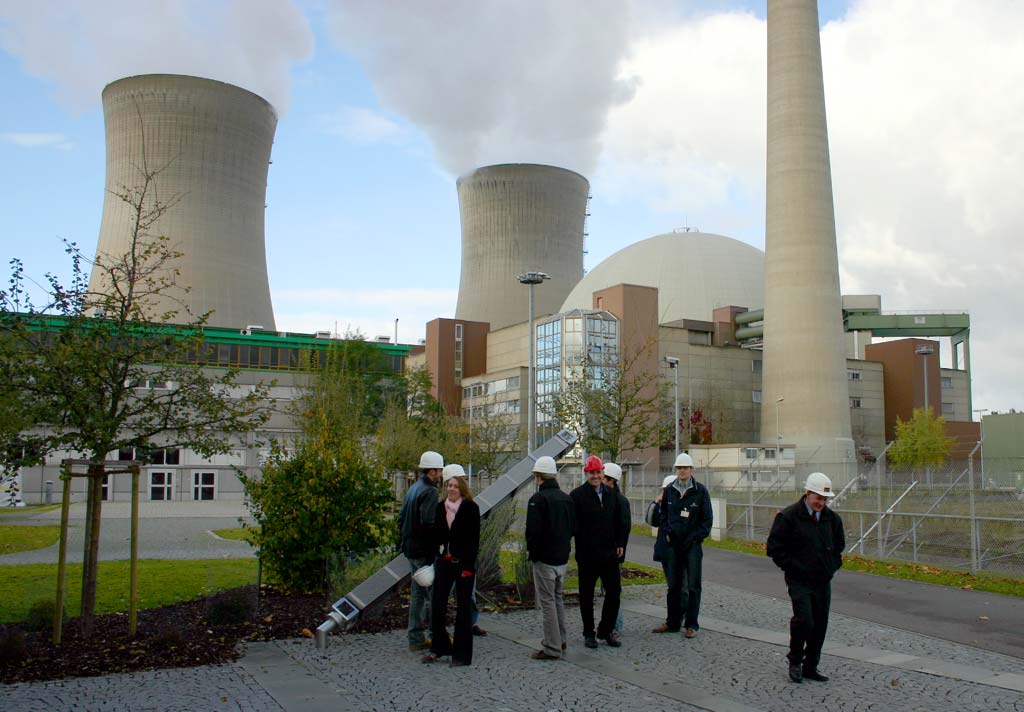
- Case Studies
Case study: Germany’s post-2020 energy shock and transition reset

Germany’s Energiewende has long aimed at cutting emissions while phasing out nuclear power (decided after Fukushima; final reactors shut on 15 April 2023) and expanding renewables. At the same time, industry and heating grew reliant on pipeline gas from Russia (via Nord Stream and other routes). By early 2022, roughly a third of Germany’s gas imports still came from Russia, exposing the economy to a single-supplier risk.
Russia’s invasion of Ukraine (Feb 2022) turned energy security into the dominant socio-economic issue. Gas flows via Nord Stream dwindled and then ceased; the Nord Stream pipelines were sabotaged on 26 Sept 2022, ending the route indefinitely and intensifying Europe’s supply crunch.
EU-wide, the REPowerEU plan (2022→) set out to cut Russian fossil fuel dependence, accelerate renewables and efficiency, coordinate gas purchasing, and mandate storage targets. The EU’s reliance on Russian gas fell from ~45% (2021) to ~15% (2023), helped by demand cuts and diversification.
Germany moved at record speed to replace Russian pipeline gas: emergency floating LNG terminals were deployed (e.g., Wilhelmshaven online Dec 2022; Lubmin Jan 2023) while long-term onshore capacity is being built.
On the demand side, Germany legislated price brakes for gas and power (2023–Apr 2024) to cushion households and firms, while urging conservation; the federal “protective shield” earmarked up to €200bn.
In buildings, the Building Energy Act (GEG, amended Sept 2023) requires most new heating systems to run on ≥65% renewables (with phased municipal heat-planning timelines), anchoring a gradual shift to heat pumps and district heat.
Outcomes so far (2022–2024):
Security: Gas storage and demand reduction avoided shortages; EU codified storage rules (≥90% before winter; now being made more flexible for 2025–27 to ease price effects).
Emissions & power mix: Coal use rose in 2022 to substitute gas, lifting emissions; in 2023, emissions fell sharply as coal generation dropped and renewables exceeded 50% of electricity (and rose further in 2024).
Industry: High energy prices and uncertainty hit energy-intensive sectors, notably chemicals, with output declines through 2023 and a weak 2024–25 outlook.
Key stakeholders
Federal government & regulators: BMWK (economy/energy), Bundesnetzagentur (market oversight, gas status), Länder for siting/permitting.
EU institutions: European Commission/Council/Parliament (REPowerEU, storage rules, state-aid frameworks).
Energy firms & infrastructure operators: LNG developers/operators, TSOs, utilities.
Industry & labor: Energy-intensive manufacturers (chemicals, metals, paper), chambers and unions shaping support schemes.
Households/consumers & municipalities: Affected by price volatility and heating transition timelines (heat-planning duties).
- External suppliers & geopolitics: Norway, US LNG, Qatar, plus the unresolved Nord Stream investigations shaping risk perceptions.
Policy responses (Germany in EU context)
Supply diversification & infrastructure: Rapid FSRU deployment; long-term LNG build-out under debate (risk of overcapacity vs security).
Demand-side measures: EU/German gas-saving targets; public campaigns; short-run fuel-switching.
- Price shields & liquidity: Temporary gas/electricity price brakes to prevent insolvencies and protect households.
- Structural transition: GEG (≥65% RES heat), acceleration of renewables and permitting under REPowerEU, and continued nuclear phase-out consistent with earlier decisions.
- Storage & joint purchasing: Binding storage targets and coordinated procurement to curb price spikes; rule flexibilisation underway for 2025–27.
Critical evaluation
What worked
Crisis management: Germany and the EU avoided outright shortages and rationing in 2022–23 through storage rules, LNG pivot, and demand cuts—remarkable given the abrupt loss of Russian gas.
Emissions rebound then decline: The 2022 coal backslide was temporary; 2023–24 saw record-low emissions and record renewable shares.
Policy speed: Extraordinary permitting and FSRU deployment timelines demonstrated administrative capacity when prioritized.
Persistent gaps/risks
Industrial competitiveness: Energy-intensive sectors remain strained, with weak output and investment intentions; ad-hoc relief (price brakes) helped but didn’t resolve structural cost differentials.
Regulatory uncertainty in heat/buildings: The GEG debate created implementation uncertainty for homeowners, installers, and municipalities; delivery capacity (skilled labor, grid connections) is a bottleneck.
Potential LNG overbuild & lock-in: Analysts warn some terminal plans may overshoot needs given EU climate targets, risking stranded assets.
Geopolitical residual risk: The Nord Stream case remains unresolved, underscoring infrastructure vulnerability and complicating public narratives.
Evidence-based recommendations
Targeted, temporary industrial electricity relief tied to transformation
Provide time-bound power-price relief for electro-intensive firms contingent on efficiency, electrification, and PPAs—aligned with EU state-aid rules—while fast-tracking grid connections for corporate renewables. Taylor WessingPrioritise “no-regret” LNG capacity and flexible contracts
Cap permanent LNG build-out at volumes consistent with Fit-for-55/2045 climate targets; favour FSRUs or modular expansions and avoid long take-or-pay terms beyond the 2030s to minimise lock-in risk. NewClimate InstituteAccelerate grids, permitting, and flexibility markets
Scale transmission/distribution upgrades and digitalisation; expand demand-response and storage procurement to integrate high shares of wind/solar and cut curtailment/price volatility that hurts consumers and SMEs. (Supports the REPowerEU thrust.) ConsiliumMake the heat transition investable for households & cities
Stabilise GEG implementation with clear municipal heat plans, predictable subsidies, and workforce programs for heat-pump installers and district-heat engineers; align with social support for low-income households. IEALock in gas-demand reductions through efficiency
Treat the crisis-era savings as a baseline: deepen building retrofits and process-heat efficiency using REPowerEU and RRF funds; monitor outcomes with transparent metrics via Bundesnetzagentur dashboards. European Commission+1Strengthen critical-infrastructure protection and transparency
Enhance subsea and cross-border energy-asset surveillance and incident reporting; communicate investigation progress on sabotage cases to sustain public trust. AP News
Sources (selected)
European Commission & Council: REPowerEU measures and storage rules/updates. European Commission+2Consilium+2
Bundesnetzagentur: Gas-supply status, 2022 figures. bundesnetzagentur.de+1
German Federal Ministries (BMWK): Price-brake measures; renewables share reports; GEG updates. bundeswirtschaftsministerium.de+2energiewende.bundeswirtschaftsministerium.de+2
IEA / Columbia SIPA: Policy summaries, analysis of the price-brake design. IEA+2
Agora Energiewende: Emissions/power-mix assessments. agora-energiewende.org
Destatis / industry sources: Industrial output developments, especially chemicals. Federal Statistical Office of Germany+1
BASE (nuclear regulator): Nuclear phase-out facts. base.bund.de
Nord Stream / legal & news updates: Incident timeline and investigations. Wikipedia+1
Related Posts
Your Partner in Real Innovation
We design and develop pioneering projects, conduct meaningful research, and build products that shape the future.


